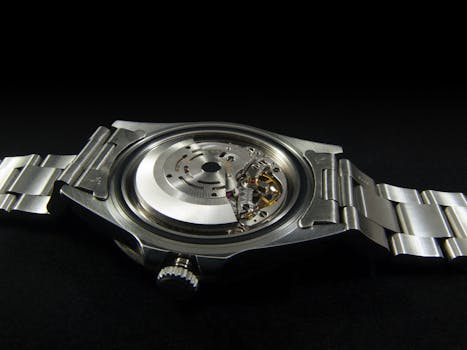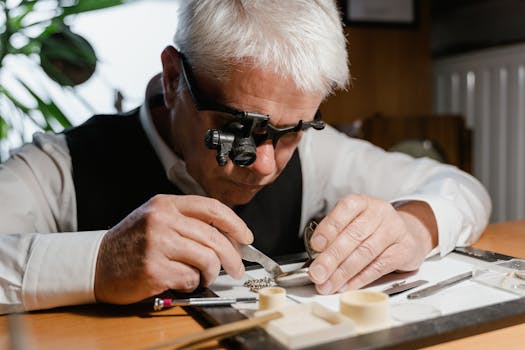The Future of Driving: Exploring the Exciting New Cars Coming in 2025
Takeaways:
- The automotive industry is set for a major transformation with the introduction of new technologies in 2025.
- Electric vehicles are expected to dominate the market, offering sustainable options for consumers.
- Advanced safety features and autonomous driving capabilities will redefine the driving experience.
The automotive landscape is changing rapidly, and as we look towards 2025, several exciting new cars are poised to enter the market. This article delves into the innovations, designs, and technologies that will define the vehicles of the future, exploring everything from electric vehicles to autonomous driving systems.
1. The Rise of Electric Vehicles in 2025
1.1 Overview of Electric Vehicle Trends
As we move into 2025, the automotive industry is witnessing an unprecedented shift towards electric vehicles (EVs). Governments worldwide are implementing stricter emissions regulations, pushing automakers to innovate and produce more sustainable options. This section explores the current trends in electric vehicles and how they are shaping the future of transportation.
1.2 Key Players in the Electric Vehicle Market
Several automakers are leading the charge in the electric vehicle market, each bringing unique innovations to the table. Companies like Tesla, Ford, and new entrants like Rivian are revolutionizing the way we think about electric cars. This subsection will highlight some of the key players and their upcoming models set for release in 2025.
1.3 The Technology Behind Electric Vehicles
The technology powering electric vehicles is evolving at a rapid pace. With advancements in battery technology, charging infrastructure, and software integration, the EV market is becoming more accessible and efficient. This section delves into the technological advancements that will define electric vehicles in 2025.
2. Autonomous Driving: The Next Frontier
2.1 Understanding Autonomous Driving Levels
Autonomous driving technology is often categorized into levels, ranging from Level 0 (no automation) to Level 5 (full automation). In this section, we will explore what these levels mean and how they apply to the cars being developed for 2025.
2.2 Major Innovations in Driver Assistance Systems
Many manufacturers are integrating advanced driver-assistance systems (ADAS) into their vehicles, paving the way for more autonomous features. This subsection will discuss the innovations that are making cars smarter and safer, including adaptive cruise control, lane-keeping assist, and automated parking systems.
2.3 The Future of Fully Autonomous Vehicles
While fully autonomous vehicles may still be a few years away from widespread adoption, several companies are testing prototypes and pilot programs. This section will look into the future of fully autonomous vehicles, the challenges they face, and the potential impact on society and the automotive industry.
3. Sustainability and Eco-Friendly Innovations
3.1 The Importance of Sustainable Manufacturing
As the automotive industry shifts towards more sustainable practices, manufacturers are exploring eco-friendly materials and processes. This section will cover the importance of sustainable manufacturing in the production of new vehicles and how it contributes to reducing the industry’s carbon footprint.
3.2 Hybrid and Alternative Fuel Vehicles
While electric vehicles are gaining popularity, hybrid and alternative fuel vehicles remain an important part of the automotive ecosystem. This subsection will discuss the role of hybrids and alternative fuels, such as hydrogen and biofuels, in the future of transportation.
3.3 Innovations in Vehicle Recycling and End-of-Life Solutions
As the number of vehicles on the road increases, so does the need for effective recycling and end-of-life solutions. This section explores how automakers are addressing this issue and the innovations being implemented to ensure vehicles are more environmentally friendly throughout their lifecycle.
4. The Shift in Consumer Preferences
4.1 Changing Demographics and Their Impact on Car Buying
As millennials and Gen Z become the primary consumer demographics, their preferences are reshaping the automotive market. This section will explore how changing demographics are influencing car design, technology, and features in the upcoming vehicles of 2025.
4.2 The Growing Demand for Connectivity and Technology
Today’s consumers expect more from their vehicles than just transportation. The demand for connectivity, smart technology, and in-car entertainment systems is on the rise. This subsection will discuss how manufacturers are responding to this demand with tech-savvy features in their 2025 models.
4.3 Customization and Personalization Trends
Consumers are increasingly looking for vehicles that reflect their personal style and preferences. This section will explore the trends in customization and personalization, highlighting how automakers are allowing buyers to tailor their vehicles to their unique tastes.
5. Safety Innovations in 2025 Vehicles
5.1 Advanced Safety Features
Safety remains a top priority for car manufacturers, and innovations in safety technology are evolving rapidly. This section will discuss the advanced safety features being integrated into new vehicles, from collision avoidance systems to improved airbag designs.
5.2 The Role of AI in Enhancing Vehicle Safety
Artificial intelligence is playing a crucial role in enhancing vehicle safety. This subsection will explore how AI is being used to predict and prevent accidents, analyze driver behavior, and improve overall road safety.
5.3 Regulatory Changes and Their Impact on Safety Standards
As new technologies emerge, regulatory bodies are adapting safety standards to keep up. This section will look at the regulatory changes expected by 2025 and how they will impact vehicle safety features.
6. Global Market Trends for 2025 Cars
6.1 The Impact of Global Economic Factors
The automotive market is heavily influenced by global economic factors, including trade policies, currency fluctuations, and economic recovery post-pandemic. This section will analyze how these factors are expected to shape the car market in 2025.
6.2 Regional Variations in Vehicle Preferences
Different regions exhibit varying preferences when it comes to vehicle types and features. This subsection will explore the regional variations in car preferences and how manufacturers are adapting their strategies accordingly.
6.3 The Role of Emerging Markets in the Automotive Industry
Emerging markets are becoming increasingly important in the automotive industry, with growing demand for vehicles. This section will discuss the potential of these markets and how they will affect global car sales in 2025.
7. The Future of Mobility: Beyond Cars
7.1 The Rise of Shared Mobility Solutions
As urbanization increases, shared mobility solutions like car-sharing and ride-hailing are becoming more popular. This section will explore the implications of shared mobility on car ownership and the automotive industry as a whole.
7.2 Integration of Smart Infrastructure and Vehicles
The future of mobility is not just about cars; it also involves smart infrastructure that can communicate with vehicles. This subsection will delve into how smart cities are being developed and how they will enhance mobility and transportation.
7.3 Innovations in Public Transportation
Public transportation is undergoing significant changes with the introduction of electric buses, autonomous shuttles, and integrated transport systems. This section will discuss the innovations shaping the future of public transportation and their impact on urban mobility.
8. Anticipated Car Models for 2025
8.1 Overview of Upcoming Electric Models
Several automakers have announced exciting electric models set to hit the market in 2025. This section will provide an overview of these anticipated models, their features, and what sets them apart from existing vehicles.
8.2 Hybrid and Plug-in Hybrid Vehicles on the Horizon
Hybrid and plug-in hybrid vehicles will continue to play a vital role in the automotive market. This subsection will highlight some of the most anticipated hybrid models and their expected performance in 2025.
8.3 Luxury and Performance Cars: What to Expect
The luxury and performance car segment is also evolving, with manufacturers introducing high-performance electric and hybrid models. This section will explore what luxury car enthusiasts can expect from the 2025 lineup.
9. The Role of Technology in Car Design
9.1 Innovative Design Processes and Tools
Technology is revolutionizing the design processes in the automotive industry. From virtual reality to advanced computer-aided design (CAD) tools, this section will discuss how technology is enhancing the design of new cars for 2025.
9.2 The Influence of Consumer Feedback on Design
With the rise of digital communication, consumer feedback plays a crucial role in automotive design. This subsection will explore how manufacturers are using consumer insights to shape the design of their vehicles.
9.3 Sustainability in Vehicle Design
Sustainability is becoming a core principle in vehicle design. This section will discuss how automakers are incorporating sustainable practices into their design processes and materials.
10. The Challenges Ahead for the Automotive Industry
10.1 Supply Chain Disruptions and Their Impact
The automotive industry has faced significant supply chain disruptions in recent years. This section will analyze the challenges posed by these disruptions and their impact on the production of new vehicles in 2025.
10.2 Regulatory Challenges and Compliance
As regulations become more stringent, automakers must adapt to ensure compliance. This subsection will explore the regulatory challenges facing the automotive industry and how manufacturers are responding.
10.3 Competition and Market Saturation
With the rise of new entrants in the automotive market, competition is becoming increasingly fierce. This section will discuss the challenges of market saturation and how established players are navigating this competitive landscape.
11. Consumer Education for the Future of Driving
11.1 The Importance of Educating Consumers on EVs
As electric vehicles become more prevalent, consumer education will be key to their adoption. This section will discuss the importance of informing consumers about the benefits and functionalities of EVs.
11.2 Understanding Autonomous Driving Technology
As automation becomes more integrated into vehicles, consumers need to understand how it works and its implications for safety and driving. This subsection will explore the need for consumer education on autonomous driving technology.
11.3 Awareness of Sustainability Practices
Educating consumers about sustainable practices in the automotive industry is essential for promoting eco-friendly choices. This section will discuss the initiatives aimed at raising awareness of sustainability in vehicle production and usage.
12. The Global Automotive Landscape in 2025
12.1 Key Regions Shaping the Future of Cars
Different regions of the world are driving innovation in the automotive sector. This section will provide insights into which regions are expected to lead the automotive landscape in 2025 and their unique contributions.
12.2 Collaborations and Partnerships in the Industry
As the automotive industry evolves, collaborations between companies are becoming more common. This subsection will explore the partnerships that are shaping the future of car manufacturing and technology.
12.3 The Role of Startups in Automotive Innovation
Startups are playing a crucial role in the automotive industry by introducing innovative ideas and technologies. This section will discuss how startups are influencing the market and what we can expect from them in 2025.






